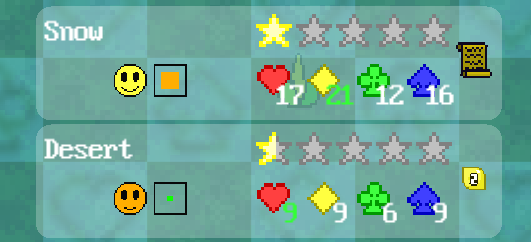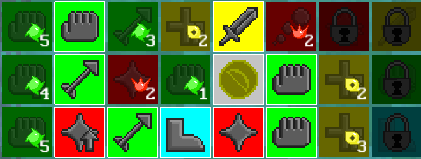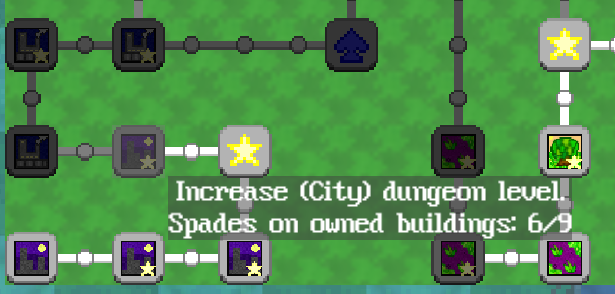The combat of AE Heart forms the core of the game's fun, but of equal importance is the framework that combat happens within. It was very important to us that all of the game's systems lend themselves as much to replayability as possible, rather than just rely on a one-shot gameplay system where you hear a story, fight scripted battles, and then are done with the game. We wanted to talk about what systems the game features, and why we chose to make each of those systems work the way they do.
Challenge

For any game to remain fun, it has to continually provide some level of challenge to the player, or at least the illusion of one. The game's reflex based combat forms the basis of the game's challenge, as reflex based challenges provide a very good challenge time and time again, even for experienced gamers.

The other major component of the game's challenge is that it allows players who are good at the game to experience even greater challenges, while the challenge will be kept low for inexperienced players so they can still have fun. This is done through the game's building system. The dungeons grow harder as more buildings are placed on the map, and more buildings can be made if the player does better in the dungeons. The harder dungeons then in turn give greater rewards, allowing those who are doing well to experience the more exciting challenges the game has to offer.

To add an extra layer of challenge for those who crave it, players can bet some of their existing treasure on their success in the next dungeon, allowing them to get even farther ahead so long as they are willing to risk what they had already collected.
Variety

Even a challenging game will get old if the challenges you face always seem the same, or if it seems like there are no new ways to approach the challenges. The first step we took towards ensuring variety was to have a range of different areas to visit, each with its own theme and set of enemies and traps. However, this would not be enough without a reason to visit each of the different areas, so we separated the resources you gathered into four types(hearts, diamonds, clubs, and spades). You need all of them to succeed in the game, and each area is better at giving a certain kind of items than other areas. In addition to this, the number in each area are determined by its difficulty and size, which are randomized, meaning that even if all the areas gave the same type of rewards, there would be reasons to go to different areas due to the varying area types. The player is also shown what special rewards are in each area ahead of time, giving them more information with which to make their decision.

AE Heart also features a wide array of active and passive items your character can use. The way you approach challenges is intimately linked to the set of items you have, so we also made the item system semi-random. You choose a class at the beginning of the game, which influences which items you are likely to find in dungeons, but it is still possible to obtain any item with any class. You may finish the game as a Warrior who decided a fire spell was a nice complement to his sword, or a Suvivalist that decided that the best way to keep enemies at bay was to swing the largest possible melee weapons at them. Each playthrough will therefore be unique.
We also randomized the Class Grid which determines how your character can level up, so one game you may be playing as a Mage with a lot of MP, and the next you may find yourself with much higher magic damage, or you may find you have an abnormally high amount of level up options from other classes and find your Mage is good in close combat, or can move very quickly. Finally, we also start houses for the building meta-game in random places so it will provide a new puzzle every time.
Freedom

We wanted to ensure that even with a high degree of randomness, players felt they had control over character customization and progress. When designing the Class Grid system, we made sure that the grid was large enough and had enough different nodes that even though the nodes are placed randomly, the player had a range of options for which path across the grid to take. We also allowed players to respec at any time, so if the nodes containing upgrades they really wanted weren't available until the later parts of the grid, they could switch nodes when they had the points available.
The building system allows for an open ended puzzle/strategy challenge where playing well will allow a player to get ahead, but there are usually a variety of good moves, giving the player freedom in advancing the difficulty of their dungeons and laying out buildings in their town.

To give players a variety of goals to accomplish in the building game, we added the Destiny Path. Each node in the Path contains a goal to achieve, such as gathering a certain number of points from other buildings or, for trickier maps, forming certain formations on the map with your own buildings. This way, the player has a range of goals they can choose from at any time, without feeling lost as to what they could be trying for next.
We focused on these elements in designing AE Heart because we wanted to make a game not only that people could play over and over, but to make a game that we ourselves would want to play over and over. We're doing our best to make the kind of game we would want to play, and we hope it comes across in the game's systems. Thanks for reading!
